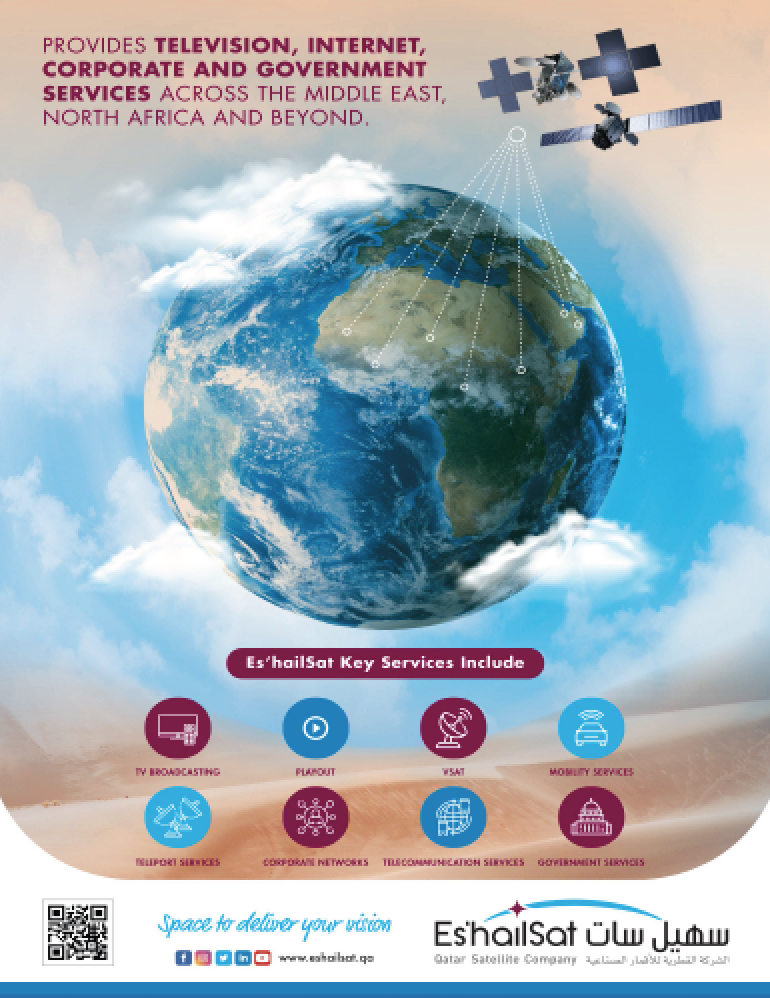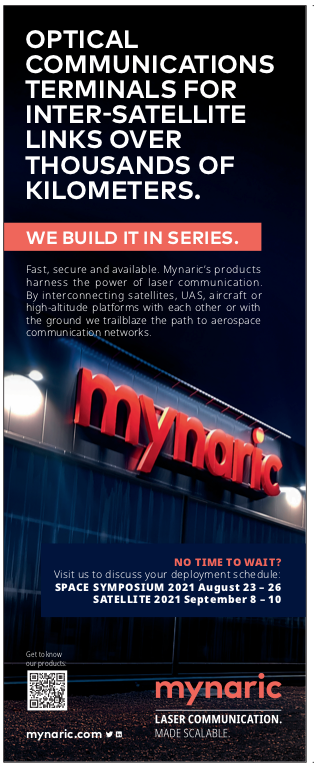USSF’s Monolith R&D Smallsat Launched Via Rocket Lab’s Electron Rocket
Rocket Lab successfully launched a research and development satellite to orbit for the United States Space Force (USSF) — this mission was Rocket Lab’s fourth launch for the year and their 21st Electron mission, overall.
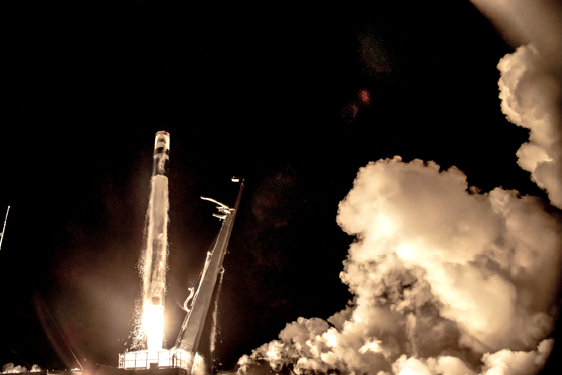
Rocket Lab’s ‘It’s a Little Chile Up Here’ mission
lifts off from the company’s Complex 1.
Photo is courtesy of the company.
The mission, named ‘It’s a Little Chile Up Here’ in a nod to the beloved green chile of New Mexico where the Space Test Program is based, launched from Rocket Lab Launch Complex 1 on New Zealand’s Mahia Peninsula at 06:00 UTC / 18:00 NZT on July 29th. A single Air Force Research Laboratory-sponsored demonstration satellite called Monolith, built by Space Dynamics Laboratory, was deployed to LEO by the Electron launch vehicle in Rocket Lab’s second mission for the USSF.
Monolith will demonstrate the use of a deployable sensor, where the sensor’s mass is a substantial fraction of the total mass of the spacecraft, changing the spacecraft’s dynamic properties and testing ability to maintain spacecraft attitude control. Analysis from the use of a deployable sensor aims to enable the use of smaller satellite buses when building future deployable sensors such as weather satellites, thereby reducing the cost, complexity, and development timelines.
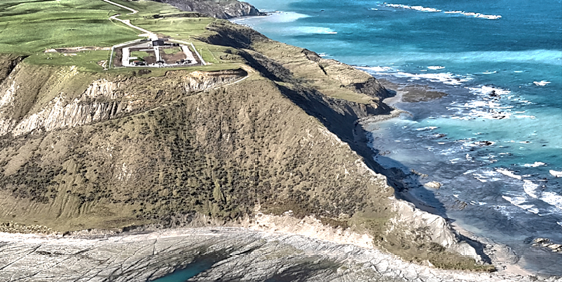
Rocket Lab’s Launch Complex 1 located on the
Mahia Peninsula in New Zealand.
Monolith is an Air Force Research Lab program designed to explore the application of small satellites if 6U (2x3x1) or 12U (2x3x2) bus sizes can be configured such that a large deployable sensor can be installed in one of the 2x3x1 side faces for DoD programs.
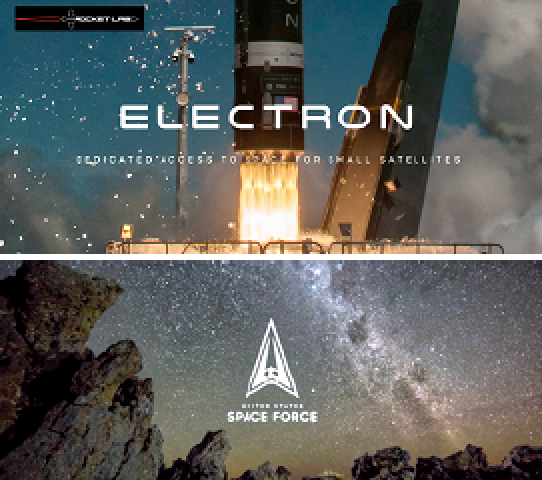
The mission was procured by the Department of Defense (DoD) Space Test Program (STP) and the Rocket Systems Launch Program (RSLP), both based at Kirtland Air Force Base, New Mexico.; in partnership with the Defense Innovation Unit (DIU) as part of the Rapid Agile Launch Initiative (RALI). The mission is being managed by the Launch Enterprise’s Small Launch and Targets Division, which is part of the USSF’s launch organization of choice.
“Our continuing partnership with Rocket Lab USA demonstrates SMC’s dedication to grow our Nation’s space capabilities both in Government, and the private sector,” said Col. Timothy Sejba, the Space & Missile Systems Center (SMC) program executive officer for Space Development. “This mission proves the functionality of innovative space launch for the Government by working with an agile company that is working diligently to meet the needs of the DoD.”
“Congratulations to all the teams behind Monolith. We’re proud to have safely delivered another mission to orbit for the United States Space Force,” said Rocket Lab founder and CEO Peter Beck. “Programs like the Rapid Agile Launch Initiative are shining a light on the crucial role small launch can play in supporting fast-paced innovation in orbit to support innovation and space capabilities.”
Flight VA254 Successfully Launched By Arianespace, Lifting Star One D2 + EUTELSAT QUANTUM To Their Assigned Orbits
On Friday, July 30, between 09:00 and 10:30 p.m. UTC, the Ariane 5 VA254 flight successfully placed two satellites in orbit from the Guiana Space Center (CSG): Star One D2, built by Maxar Technologies for Brazilian operator Embratel, and EUTELSAT QUANTUM for Eutelsat, developed with Airbus Defence and Space and the European Space Agency (ESA).
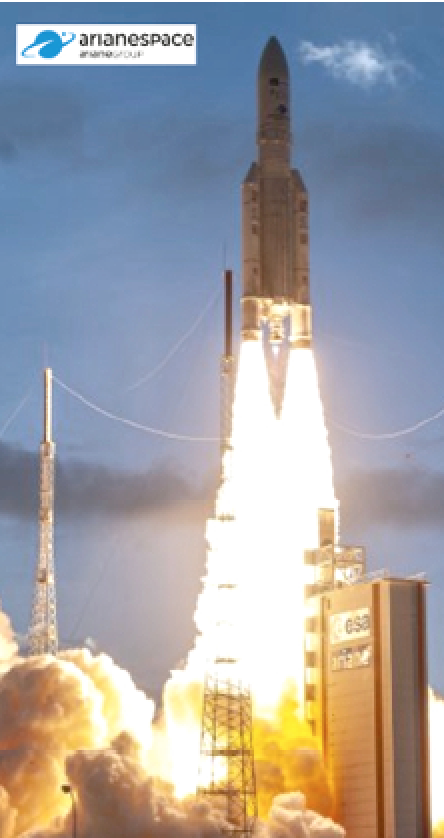
Star One D2 is a high-capacity, multi-mission satellite with Ku-, Ka-, C- and X-band transponders that will enable it to expand broadband coverage to new regions in Central and South America and add an updated X-band payload for government use over the Atlantic region.
Built on Maxar’s 1300-class platform at the company’s Palo Alto, California, manufacturing facility, Star One D2 will improve access to high-quality services, serving the parabolic fleet in Brazil, payTV, cell phone backhaul, data, video and Internet for corporate customers and government agencies.
The EUTELSAT QUANTUM satellite was developed in the framework of a public-private partnership between the European Space Agency (ESA), the operator Eutelsat and Airbus Defence and Space. With its configurable software-based design, EUTELSAT QUANTUM will be the first universal satellite in the world that can be repeatedly adjusted to the customer’s requirements at any time.
The satellite is equipped with electronically steerable receiving antennae and operates in Ku-band with eight independent reconfigurable beams. This configuration allows the operator to reconfigure in-orbit the radio-frequency beams over the coverage zones, providing unprecedented flexibility in data, government and mobility services.
The relationship between Arianespace and both Embratel and Eutelsat goes back more than three decades and has only become stronger over time. Since 1985, the year of its first mission for Embratel, Arianespace has launched the Brazilian operator’s entire fleet of 12 satellites. In addition, global operator Eutelsat has entrusted the launch of 36 satellites to Arianespace since 1983.
For this flight, the performance required of the Ariane 5 was 10,515 kg, including 9,651 kg for both payloads. Ariane 5 was also equipped with a cryogenic upper stage called ESC-D, whose tanks were extended for this mission, with an overall mass of the stage at liftoff of more than 19 metric tons.
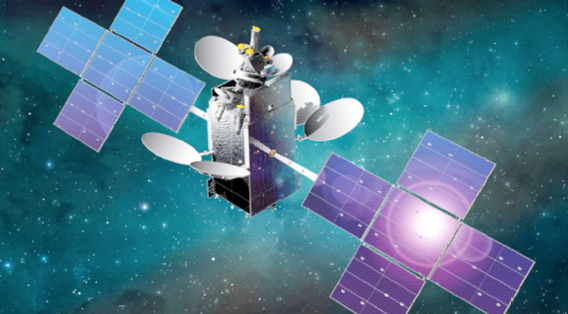
Artistic rendition of the Star One D2 satellite,
courtesy of Maxar.
ArianeGroup is the lead contractor for the development and production of Ariane 5 and Ariane 6 launchers. The company coordinates an industrial network of more than 600 companies (including 350 SMEs). ArianeGroup oversees the entire Ariane 5 industrial supply chain, from performance optimization and associated studies, to production and mission-specific data and software.
This chain includes equipment and structures, engine manufacturing, integration of the various stages, and launcher integration in French Guiana. ArianeGroup delivers a flight-ready launcher on the launch pad to its subsidiary Arianespace, which operates the flight from lift-off, pad to its subsidiary Ariane on behalf of its customers.
Monolith is an Air Force Research Lab program designed to explore the application of small satellites if 6U (2x3x1) or 12U (2x3x2) bus sizes can be configured such that a large deployable sensor can be installed in one of the 2x3x1 side faces for DoD programs.
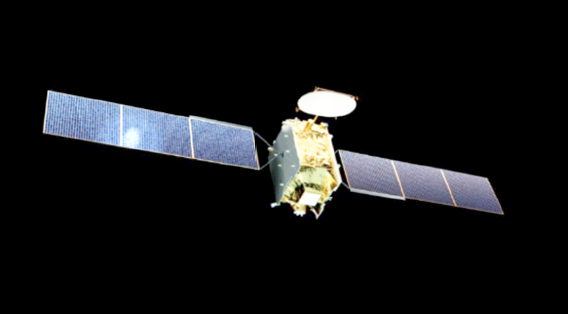
Artistic rendition of the EUTELSAT QUANTUM
satellite, courtesy of Airbus Defense and Space.
The mission was procured by the Department of Defense (DoD) Space Test Program (STP) and the Rocket Systems Launch Program (RSLP), both based at Kirtland Air Force Base, New Mexico.; in partnership with the Defense Innovation Unit (DIU) as part of the Rapid Agile Launch Initiative (RALI). The mission is being managed by the Launch Enterprise’s Small Launch and Targets Division, which is part of the USSF’s launch organization of choice.
“Our continuing partnership with Rocket Lab USA demonstrates SMC’s dedication to grow our Nation’s space capabilities both in Government, and the private sector,” said Col. Timothy Sejba, the Space & Missile Systems Center (SMC) program executive officer for Space Development. “This mission proves the functionality of innovative space launch for the Government by working with an agile company that is working diligently to meet the needs of the DoD.” “Congratulations to all the teams behind Monolith. We’re proud to have safely delivered another mission to orbit for the United States Space Force,” said Rocket Lab founder and CEO Peter Beck. “Programs like the Rapid Agile Launch Initiative are shining a light on the crucial role small launch can play in supporting fast-paced innovation in orbit to support innovation and space capabilities.”
“With this new Ariane 5 success, the first in 2021, Arianespace is pleased to be continuing its service to two of its most loyal customers, operators Embratel and Eutelsat,” said Stéphane Israël, CEO of Arianespace. “This mission with two highly innovative satellites on board, built by Maxar Technologies and developed by Airbus Defence and Space and ESA respectively, has reconfirmed how the competitiveness and reliability of our launch solutions serves the ambitions of our customers. We are committed to their total satisfaction, through our current launchers, Ariane 5, Soyuz and Vega, and future launchers with Ariane 6 and Vega C.”
“Ariane 5 blasting off from the Guiana Space Center is a strong symbol at this time when Europe is resetting its ambitions for space, in particular with launchers,” said André-Hubert Roussel, CEO of ArianeGroup. “Congratulations to the teams at ArianeGroup and Arianespace and all our partners, who once again demonstrated their remarkable professionalism with a perfect launch campaign. Our solid expertise will also be a major factor in the success of Ariane 6, for which the first flight model is currently being integrated at our sites in France and Germany.”
Ariane 5 is a program of the European Space Agency (ESA), carried out in cooperation between public institutions and industry. Marketed and operated by Arianespace, the Ariane 5 launches take place from the Guiana Space Centre in Kourou, with the support of teams from the French space agency CNES.
www.arianespace.com
Fine Tuning Their Network Solutions, Inmarsat Conducts ORCHESTRA To The Market
Inmarsat has unveiled plans for ORCHESTRA, which the company is calling the communications network of the future.
In the largest ever transformation of its current world-class services, Inmarsat ORCHESTRA will bring together existing GEO satellites with LEO satellites and terrestrial 5G into an integrated, high- performance solution.

Whether for a ship in a crowded port, an aircraft preparing to land at LAX, or a defence force deployed in a remote location, ORCHESTRA is designed to meet evolving connectivity needs in the mobility market with a service unmatched by any competitor offering, planned or in existence.
ORCHESTRA will open up a host of new and previously unattainable possibilities for industries across the world. New services include close-shore navigation for autonomous vessels, next-generation emergency safety services for maritime crews, secure and tactical private networks for governments and direct-to-cloud connections for airlines. New segments set to benefit from ORCHESTRA include energy rigs and drilling platforms, mid-market business aircraft, coastal vessels, smart passenger ships and urban air mobility.
ORCHESTRA is unique as it draws together the benefits of multiple technologies to create one cohesive solution. LEO, GEO and terrestrial networks have never been combined at scale before to create a unified connectivity service for mobility customers.
The result is a ‘dynamic mesh network’ that will deliver high- performance connectivity everywhere. Bringing together the lowest average latency and fastest average speeds with unique resilience, ORCHESTRA will eliminate the industry-wide challenge of congested network ‘hot spots’.

Inmarsat’s existing GEO satellites — both GX and L-band — will continue to provide global coverage, high performance, security and resilience. Terrestrial 5G adds ultra-high capacity in busy ‘hot spots’, such as ports, airports, and sea canals. A small constellation of LEO satellites will layer additional high capacity over further high-demand areas such as oceanic flight corridors. As a result, the network will offer the highest capacity for mobility users worldwide, and at ‘hot spots.’
The network will benefit from ‘dynamic mesh’ technology, which allows individual customer terminals to direct traffic to and from other customer terminals.
This means that a ship within reach of a 5G ground station can receive ample capacity for its own needs as well as route capacity onwards to other vessels beyond terrestrial reach. This effectively creates a mobile web of terminals that extend the network’s reach and improve its performance and resilience. This new approach means that Inmarsat can easily boost capacity in high-density areas, such as ports and airports, ensuring customer needs continue to be met well into the future with capacity scaled directly to match their requirements. The initial five-year (2021-2026) total investment for ORCHESTRA is expected to be in the order of $100 million.

“An orchestra brings different instruments together, each supporting the other and playing its role in the masterpiece. We’re building ORCHESTRA on the same concept,” said Rajeev Suri, CEO of Inmarsat. “By combining the distinct qualities of GEO, LEO and 5G into a single network, we will deliver a service that is far greater than the sum of its parts. Our customers will benefit from dramatically expanded high throughput services around the world. This is the future of connectivity and Inmarsat is perfectly positioned to bring it to the world with its proven technology expertise, right base of customers and partners, and financial strength.
“ORCHESTRA ensures Inmarsat is well positioned to deliver long-term, profitable growth by delivering new services to existing customers, targeting near-adjacent market segments, and maintaining a strong competitive position,” said Suri. “We have a record of adopting the right technology at the right time. We plan to focus initially on delivering the ORCHESTRA terrestrial network, while preparing for a future LEO constellation in the range of 150-175 satellites. This is a highly cost-effective approach that leverages Inmarsat’s leading GEO satellite networks as part of ORCHESTRA’s Inmarsat’s leading GEO satellite unique multi-layer architecture.”
AI Supercomputing From Aitech
For Next Generation Space Apps Aitech has developed the S-A1760 Venus™, a powerful and the smallest radiation-characterized space AI GPGPU. The new, small form factor (SFF) system is rated for space flight and smallsat constellations used in Near Earth Orbit (NEO) and Low Earth Orbit (LEO) applications.

The COTS-based system is validated for use in these short duration and NEO/LEO environments through the Series 300 level qualification standard that identifies the rad-tolerant needs of space components and systems not used in deep space or long-haul applications.
Based on Aitech’s popular A176 Cyclone GPGPU system, the S-A1760 Venus also uses the NVIDIA Jetson TX2i system-on-module (SoM) that features the Pascal™ architecture with 256 CUDA cores and reaches 1 TFLOPS of processing.
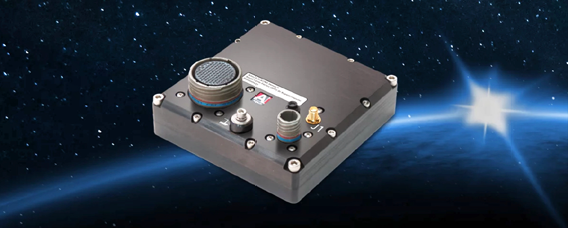
This compact, rugged, space-rated system is ideal for high performance, small footprint environments and is, according to the company, the most advanced solution for on-board edge computing such as AI, deep learning and video and signal processing for the next generation of short duration spaceflight, NEO and LEO satellites applications.
The new AI supercomputer includes a robust set of I/O interfaces including Gigabit Ethernet, UART Serial, USB 2.0, CANbus and discretes as well as DVI/HDMI output. Video capture includes an HD- SDI input with a dedicated H.264 encoder and eight RS-170A (NTSC)/ PAL composite channels available simultaneously.
The S-A1760 Venus is a truly SFF SWaP (Size, Weight and Power) optimized system and meets MIL-STD-810H requirements for bench handling and conforms to VITA 47 for shock and vibration.
Dan Mor, Director, Video and GPGPU Product Line at Aitech, noted, “With the growing need for advanced imaging and data processing throughout space-rated applications, transitioning our powerful GPGPU-based AI supercomputers to this industry was a logical choice. By validating these space-rated, COTS-based systems with a clearly defined and recognized qualification level, we’re helping lead the charge in the development of commercial space applications and small sat cluster innovations.”
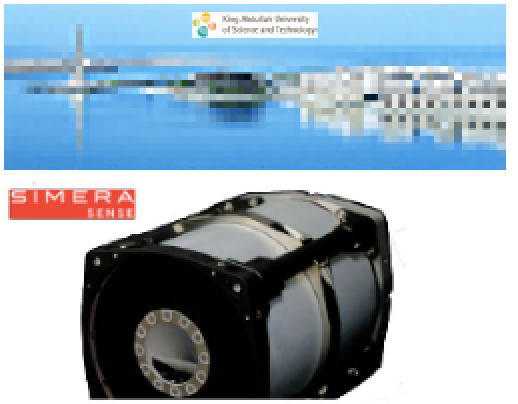
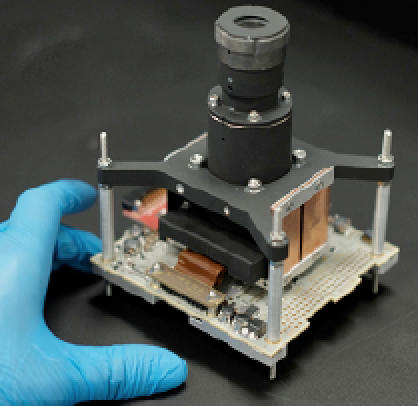
Photo of the HyperScape50 smallsat,
courtesy of Simera Sense.
KAUST Selects Simera Sense For Smallsat Hyperspectral Payload
The King Abdullah University of Science and Technology (KAUST) has selected Simera Sense to deliver a hyperspectral instrument with advanced onboard processing for their 6U Cubesat mission that is to be launched toward the end of 2022.
Simera Sense combines the +30 band HyperScape50 instrument with Unibap‘s (Sweden) SpaceCloud Services to create a payload with powerful artificial intelligence (AI) capabilities. This combination of onboard processing and a hyperspectral sensor provides KAUST with the capacity for enhanced monitoring of the Earth system via a never before seen smallsat configuration.
UltiSat Appoints A New V.P. Of Systems Engineering
UltiSat, a global provider of critical communications solutions, has named Tom Holman to the position of Vice President of Systems Engineering.

Tom joins UltiSat most recently from DataPath, a satellite ground systems manufacturer, where he led the company’s engineering department for the past six years and served in various engineering management positions since 2005.
In this newly created role, he will be responsible for leading the design, development and implementation of advanced systems that enable satellite communications through both established and newly emerging technologies.
Over the past year, UltiSat has made a number of strategic investments to expand its capabilities and the range of solutions that it can offer. The company provides satellite networks for land based, maritime, and airborne missions. The newly created role of Vice President of Systems Engineering is part of the company’s commitment to drive innovation across a variety operating environments.
As the new head of Systems Engineering, Tom Holman brings a track record of developing complex satellite communications systems for customers in both commercial and government applications. His resume includes the development of sub-meter man-pack products, fly-away kits, skid and trailer mounted systems, mobile command vehicles, master earth stations, and large-scale teleport facilities.
Prior to DataPath, Tom spent nearly 14 years at SpaceCom Systems in a variety of progressive network engineering and management roles. He is a veteran of the U.S. Army, ultimately serving as a Captain in tactical communications. Tom holds a Master of Science in Telecommunications Management and a Bachelor of Science in Electrical Engineering from Oklahoma State University.
“The satellite communications landscape is evolving rapidly with next generation constellations requiring an entirely new set of advanced terminals and gateways, to make good on the promise of higher performance connectivity,” said David Myers, president and CEO of UltiSat. “Complex engineering and integration are at the very core of our remote and mobile solutions. Tom brings a wealth of expertise, having developed some of the most sophisticated systems in the industry. We are thrilled to have him lead the communications in the industry. We are thrilled to have him lead the com innovations that will enhance our customer’s missions.”
African Space Industry Revenue to Surpass $10.24 billion by 2024
Space technologies continue to be instrumental to Africa’s development, with an increasing number of space application projects being implemented across the continent.
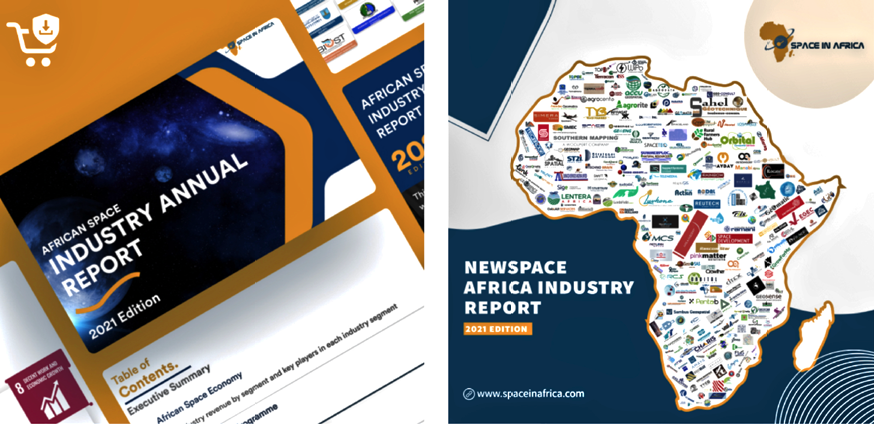
Space in Africa has released the African Space Industry Annual Report, 2021 Edition. The report was built on the two previous editions to analyze space activities across the continent, industry dynamics, and trends, opportunities for government and commercial players, as well as the regulatory framework.
Increasing government budgets
The African space industry has maintained positive growth despite the ongoing Covid-19 pandemic. From a budget of $283.12 million in 2018, government space budgets in Africa rose to $325.11 million in 2019 and $503.12 million in 2020, contributing 0.7 percent to global space budgets in 2020, the fourth highest region after North America, Europe and Asia. In 2021, African countries budgeted $548.6 million for the space program, a 9 percent increase from the 2020 budget.
New players on the block
African governments have increasingly become aware of the potential and opportunities underlying the space sector, which is evident by the growing number of African countries developing national space programs. For example, Botswana launched a space program in December 2020, the Rwandan legislature approved the law establishing the Rwanda Space Agency in March 2021, Namibia launched a National Space Science and Technology Policy in June 2021, and Burkina Faso, Djibouti, and Zambia are now developing new satellites that will launch their National space programs.
Space for sustainable development
Through Agenda 2063: The Africa We Want, the African Union has identified space technologies as a critical tool that can boost Africa’s economic growth and development and lead to the rapid transformation of the continent. Eighty-one space application projects are currently being implemented across the continent funded by African and foreign institutions. These projects are capitalizing on Earth Observation (EO) resources and satellite communications (SATCOM) to address various socio-economic problems across the continent, from disaster monitoring to security, agriculture, land use and management, forest management, among others.
Growing satellite market
Tunisia launched Challenge-One in March 2021, while Mauritius launched MIRSAT-1 in June 2021. These two satellites bring the number of African satellites launched to date to 44 and, at the same time, 125 satellites are now under development across 23 African countries, all expected to be launched before 2025.
New opportunities have emerged around satellite constellations on the continent, with Egypt, South Africa, and Tunisia leading various initiatives.
While Africa is currently unable to launch satellites from the continent itself, new opportunities are now emerging for foreign players to capitalize on several launch sites available on the continent. The industry garnered revenue of $7.37 billion in 2019 and is expected to generate more than $10.24 billion in revenue by 2024, with growth expected across EO and geospatial services, SATCOM services, satellite navigation services, and component manufacturing and equipment services.
More commercial activities than ever before
More than 282 companies now operate in the industry value chain — both upstream and downstream companies. Their operations cut across component manufacturing and equipment services, EO and geospatial services, satellite communications services, astronomy services, among others.
More companies were founded in the last decade, across the industry segment, than in the previous five decades. While most downstream companies are domiciled in Egypt, Kenya, Nigeria, and South Africa, the majority of the upstream companies are domiciled in South Africa.
The 2021 edition of the Africa Space Industry Annual Report is published by Space in Africa, the authority on news, data and market analysis for the African space and satellite industry. It presents data and analyses on projects, deals, partnerships, and investments across the continent. It also analyses the growing demand for space technologies and data on the continents, the business opportunities it offers and the necessary regulatory environment in the various countries. The report comes with annual access to real-time data on every industry segment and player via the new Space in Africa Data Portal.
Visit www.spaceinafrica.com/reports to access the report.


